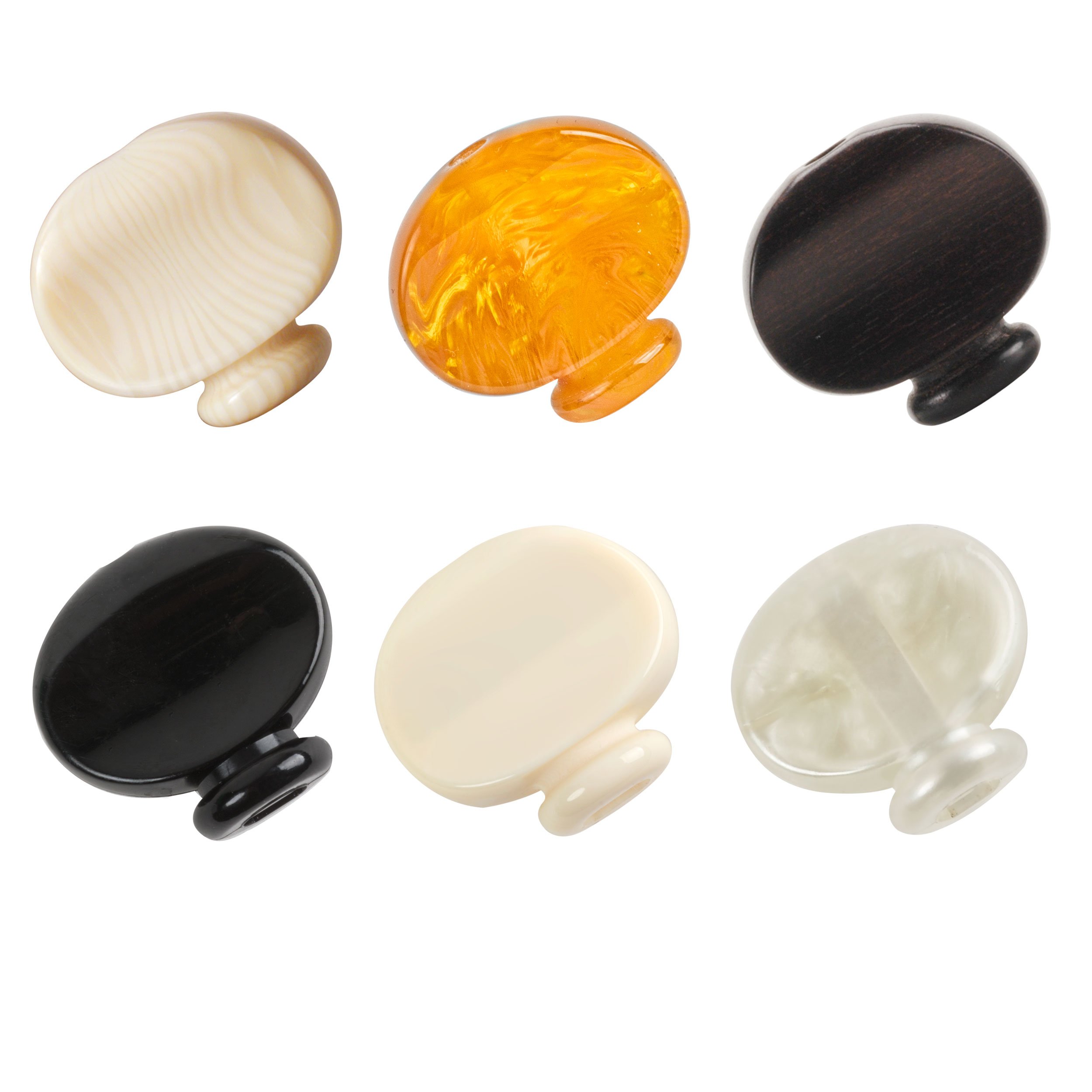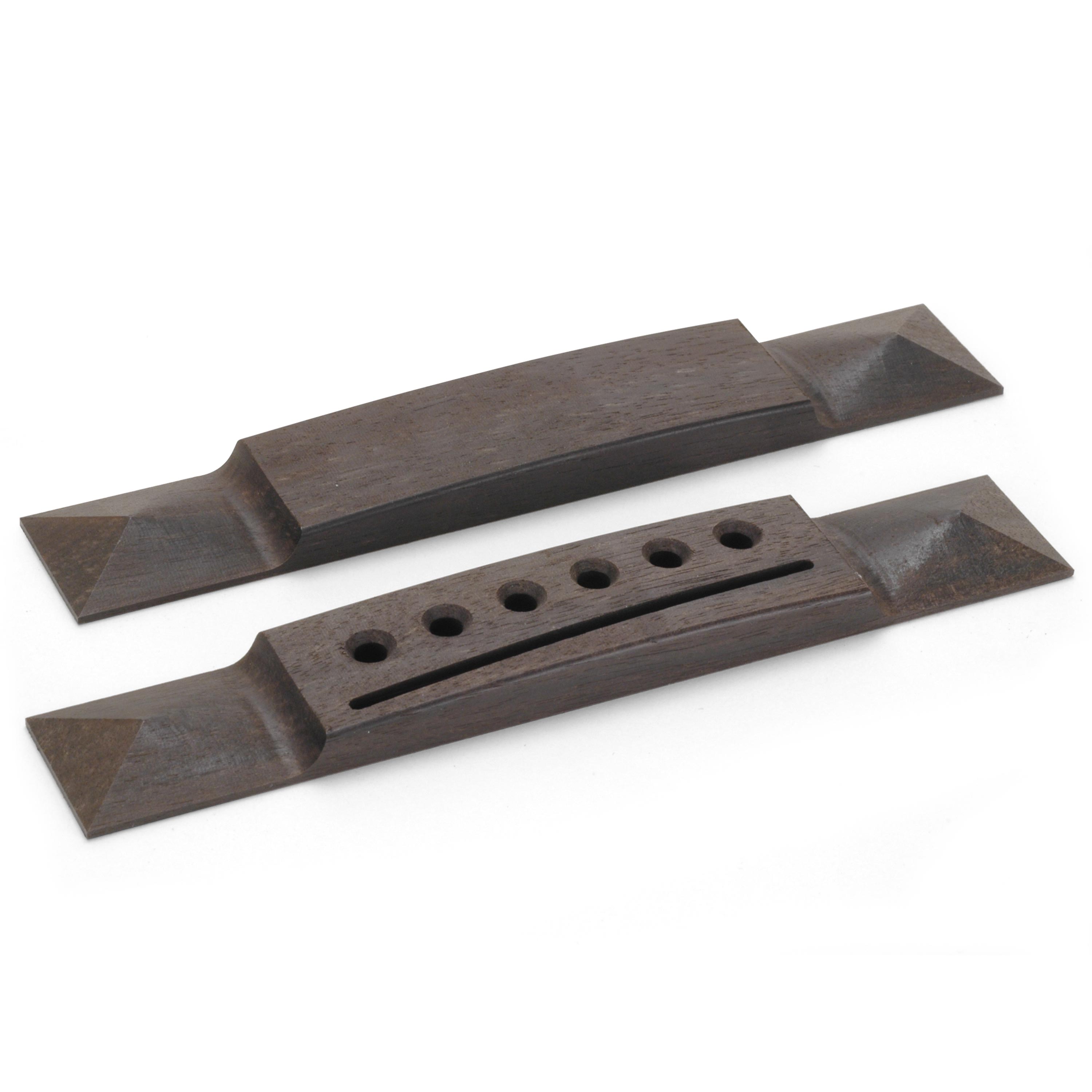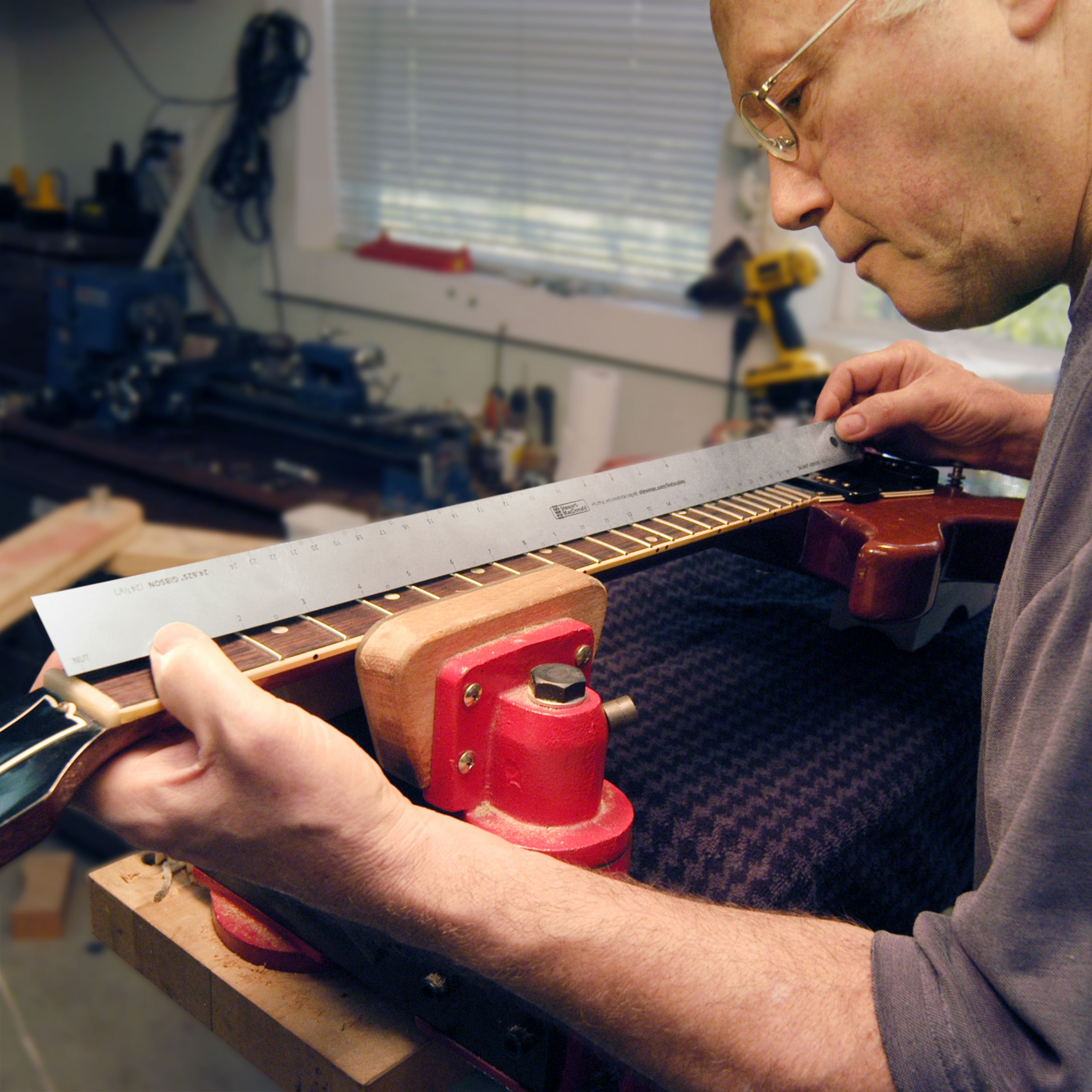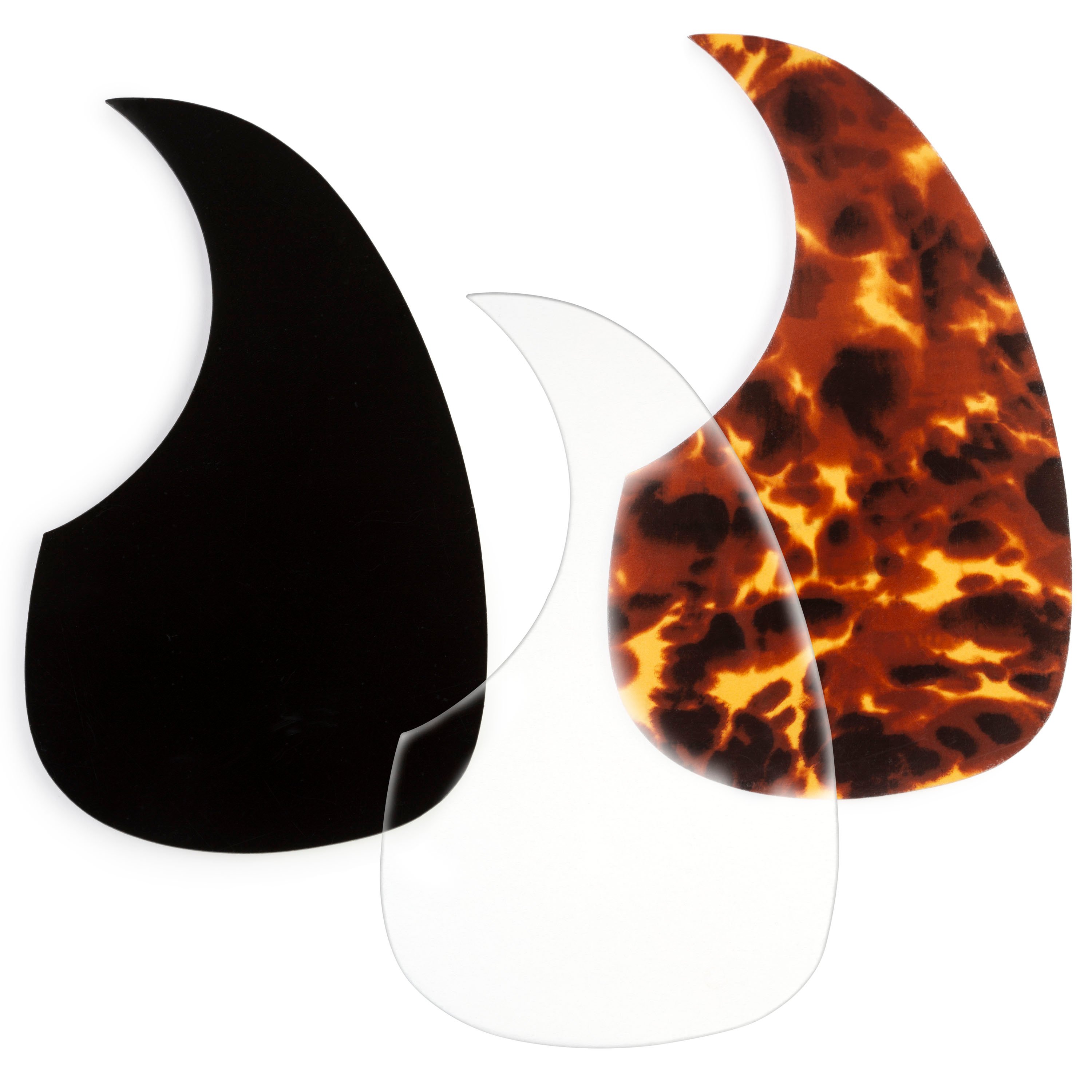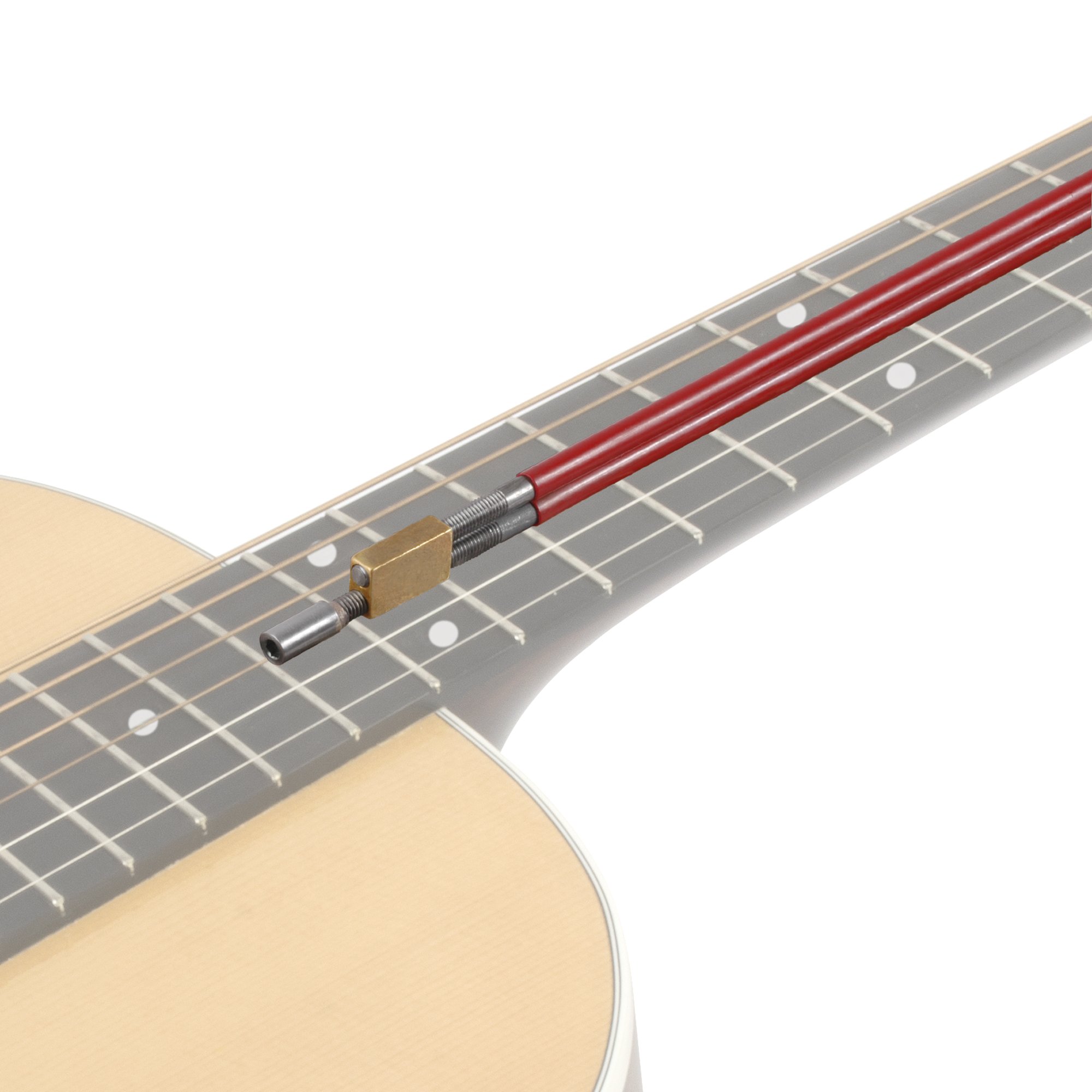Dick Boak of Martin Guitars talks about pre-war tenors, Part 1
Issue 194 July 04, 2013
Dick Boak of the Martin Guitar Company visiting Dan Erlewine's guitar repair shop. The conversation is about pre-war Martin tenor guitars, and Dick really knows this subject. Check out Part 2 for a discussion of the history of the Martin pickguard.
In this Trade Secrets video:
- 1927 Martin 5-15T and 1932 Martin O-18T
- The origin of the tenor guitar
- CF Martin III's spruce grain preferences
- Scale length related to tuning pitch
- Lowering the action on old pre-truss rod Martins
Video Transcription
[on-screen text reads: Dick Boak, Martin Guitar Co.]
Dick Boak: This is my pal, Craig Thatcher a great, great guitar player and Martin clinician. He's going to give us a little sample on this beautiful 1932 O-18 tenor.
[Craig plays tenor guitar music]
Craig Thatcher: Thanks, that sounds great.
Dan Erlewine: Hi, I'm Dan Erlewine, and we're in my shop on a Friday morning with Dick Boak from the Martin Guitar Company and Mike McGovern, who heads the tech support at StewMac phone line. Let's hear about the tenor guitar, Dick.
Why tenor guitars?
Dick Boak: They're beautiful things. The reason for tenor guitars was really because of banjo players. The banjo produced such a brash, harsh sound that the tenor guitar became popular because it gave the tenor and plectrum players a softer, more guitar-like sound in a tenor format.
So these are Size 5s [on-screen text reads: 1927 Martin 5-15T]. This is one of the smaller sizes that Martin made with a 14-fret neck. These were pretty popular, especially with string bands and marching bands that were playing banjo, like the Mummers in Philadelphia. They could play similar to the tenor banjo on the little guitars.
Gradually though, the tenor at Martin was redesigned, this in 1932. As a matter of fact, this is an O-18T [on-screen text reads: 1932 Martin O-18T], and I think these were started around 1929. Now the mahogany top is spruce, this is Adirondack spruce. And Martin felt that the wide grain should always go in the middle. C.F. Martin III always talked about that. The wide grain, he felt, produced a better tone when put in the middle of the guitar. And I think the vibrations are a little more with wider grain. The tight grain on the edges was stiffer. And we've found more recently that the stiff grain is great on rosewood guitars and the wide grain is great on mahogany guitars. The wide grain tends to add bass response to a mahogany guitar which is typically trebly and, conversely, the tight grain tends to add treble response to a guitar made of rosewood that is typically bassy.
Grover banjo tuners
Dan Erlewine: What's it tuned to?
Dick Boak: It's tuned to CGDA.
Mike McGovern: That's right.
Dick Boak: So here we've got the planetary banjo style tuners. These are Grovers, right? Yeah, Grover patent and stamp on the back of the headstock. These tuners would've appeared starting around 1930 on orchestra models.
They also started using a silk-screened logo around 1930. This is the very, very original first logo that Martin put on the face of the headstock on the head plate and these were eventually replaced by a couple of different types of decals.
And so here you can see the Brazilian rosewood end piece as well as the binding with wood inlay. A little scarf joint here where two pieces of Brazilian rosewood are joined, this appears to be original. And, of course, mahogany back and sides for extremely lightweight and breathy tone.
Scale length
Mike McGovern: Is the scale length shorter? Is it braced the same?
Dan Erlewine: Let's measure it.
Dick Boak: Yeah. It is 10 and three quarters so... 21 and a half?
[on-screen text reads: To measure scale length: Measure from the nut to the 12th fret... Then multiply by two.]
Dan Erlewine: It's a 23-inch scale, 23 and a quarter?
Dick Boak: 23-inch scale, roughly, 23 and a quarter.
Dan Erlewine: 11 and a half to the 12th fret. Over here it's 10 and five eighths [on-screen text reads: StewMac Precision Straightedges - Get accurate neck evaluations]. That's a 14-fret. This is a 12-fret to the bottom.
Dick Boak: 10 and five eighths double, that would be...
[on-screen text reads: Anybody got a calculator?]
Dan Erlewine: That's 21 and...
Dick Boak: 21 and a half.
Dan Erlewine: Right in there. 21 and a half.
Scale pitch
Dick Boak: And the shorter scale actually lends itself to a higher pitch of tuning.
Mike McGovern: Oh, interesting.
Dick Boak: Because if you tuned a standard pitch on a short scale instrument the strings are going to be very floppy. And as you lengthen the scale you're actually tightening the string and giving more projection to the sound. So this, I believe, is a 23-inch scale, still quite short and capable of being tuned to a higher pitch.
Mike McGovern: Yeah.
Gibson tenor guitars
Dick Boak: It wouldn't be fair to ignore this, that there were other makers like Gibson making their version of tenor guitars. And one of the interesting things that I noticed here is the fingerboard which has this little point. And if you notice on Style 3 and Style 5 Martin ukuleles, they'll have this point, they'll have the pointed ukulele headstock, and also a little inlay down here. And we refer to this shape, especially associated with the inlay at the bottom of the guitar but also this shape here, which is kind of a copy of that, is taken from early Martin ukuleles, around 1916, that Martin first started that. It's called a pendalogue.
Mike McGovern: A pendalogue.
Dick Boak: I don't even know if you'll find that on Google but it's a very obscure term that describes this shape and the corresponding inlay down at the bottom of the ukulele.
Mike McGovern: Pendalogue, huh.
Dick Boak: So this is a beautiful little... It has that Gibson smell.
Mike McGovern: Different smells, right?
Dick Boak: The smell of Gibson is different from the smell of a Martin.

